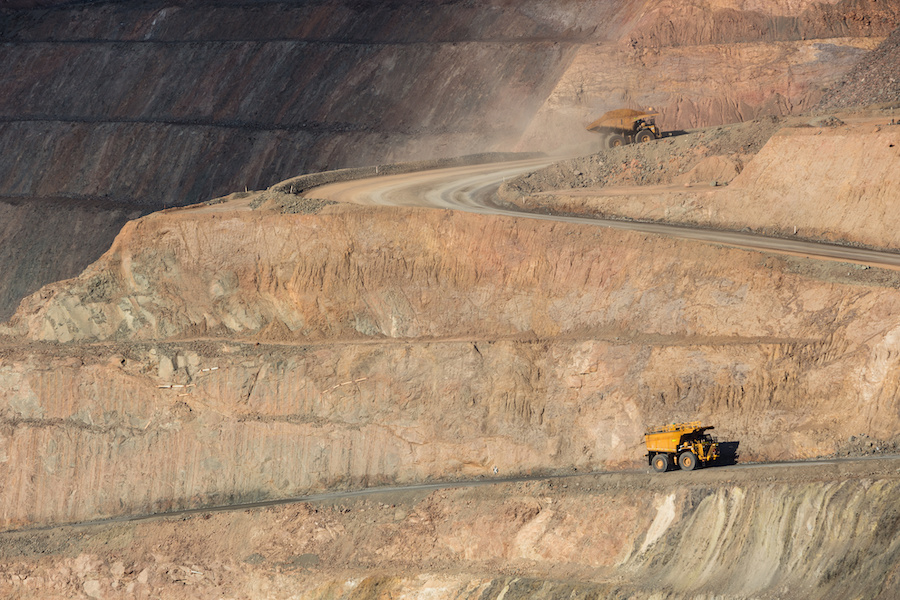
Resource-rich Western Australia has been picked the most attractive region for mining investment in 2021, replacing the US state of Nevada, which fell to the third place in the latest annual survey of mining companies released by think-tank the Fraser Institute.
Canada’s Saskatchewan is still on the podium, climbing from a third place overall in 2020 to a second position in the 2021 index, which takes both mineral and policy perception into consideration.
The US was the country with the most jurisdictions considered among the world’s 10 most attractive by mining investors — Nevada, Alaska, Arizona and Idaho. Canada followed closely with three provinces at the top of the index — Saskatchewan, Quebec and the Yukon. Australia only had two states among the best ten destinations — Western Australia and Southern Australia.

As in previous years, the best places to invest in mining are located in developed countries with long histories of success in the industry, which not necessarily is a good thing.
The main issue is that the number of available projects in the top jurisdictions are limited, while some of the world’s best deposits are in places where doing business is, or is perceived as, risky.
Zimbabwe, which has an abundance of resources including gold, platinum, diamonds, lithium, chrome, and coal, ranked as the least attractive jurisdiction in the world for investment followed by Spain, the Democratic Republic of Congo (DRC) and Mali.
Also in the bottom ten, beginning with the worst, are Nicaragua, China, Panama, Argentina’s Mendoza, Venezuela and South Africa.
Permit times
The survey also included a sub-ranking of exploration jurisdictions, based on the length of their permitting process.
This year’s report went beyond Canada, gathering data from Australia, the US and Scandinavia, all regions where mining, environmental and other policies are broadly comparable.
In most Canadian provinces and territories, the majority respondents said they were able to acquire the necessary exploration permits within six months. There were some notable differences among regions, particularly when comparing Manitoba, where 42% of participants said it took them 24 months or more to obtain all necessary permits, versus British Columbia, where the majority said it took between three and six months.
“Overall, senior mining executives continue to cite the uncertainty around protected areas, disputed land claims, and environmental regulations as major areas of concern for Canadian provinces and territories,” said Elmira Aliakbari, director of the Fraser Institute’s Centre for Natural Resource Studies and co-author of the study.
“Policymakers in every province and territory should understand that mineral deposits alone are not enough to attract investment,” Aliakbari said.
Quebec performed the best, with 60% of respondents indicated that they received exploration permits in two months or less. When comparing the four regions included in the survey — Canada, the United States, Australia, and Scandinavia — Canadian jurisdictions have, on average, a higher percentage of respondents indicating that it took six months or less for them to receive their permits.
Resource-rich Western Australia has been picked the most attractive region for mining investment in 2021, replacing the US state of Nevada, which fell to the third place in the latest annual survey of mining companies released by think-tank the Fraser Institute.
Canada’s Saskatchewan is still on the podium, climbing from a third place overall in 2020 to a second position in the 2021 index, which takes both mineral and policy perception into consideration.
The US was the country with the most jurisdictions considered among the world’s 10 most attractive by mining investors — Nevada, Alaska, Arizona and Idaho. Canada followed closely with three provinces at the top of the index — Saskatchewan, Quebec and the Yukon. Australia only had two states among the best ten destinations — Western Australia and Southern Australia.

As in previous years, the best places to invest in mining are located in developed countries with long histories of success in the industry, which not necessarily is a good thing.
The main issue is that the number of available projects in the top jurisdictions are limited, while some of the world’s best deposits are in places where doing business is, or is perceived as, risky.
Zimbabwe, which has an abundance of resources including gold, platinum, diamonds, lithium, chrome, and coal, ranked as the least attractive jurisdiction in the world for investment followed by Spain, the Democratic Republic of Congo (DRC) and Mali.
Also in the bottom ten, beginning with the worst, are Nicaragua, China, Panama, Argentina’s Mendoza, Venezuela and South Africa.
Permit times
The survey also included a sub-ranking of exploration jurisdictions, based on the length of their permitting process.
This year’s report went beyond Canada, gathering data from Australia, the US and Scandinavia, all regions where mining, environmental and other policies are broadly comparable.
In most Canadian provinces and territories, the majority respondents said they were able to acquire the necessary exploration permits within six months. There were some notable differences among regions, particularly when comparing Manitoba, where 42% of participants said it took them 24 months or more to obtain all necessary permits, versus British Columbia, where the majority said it took between three and six months.
“Overall, senior mining executives continue to cite the uncertainty around protected areas, disputed land claims, and environmental regulations as major areas of concern for Canadian provinces and territories,” said Elmira Aliakbari, director of the Fraser Institute’s Centre for Natural Resource Studies and co-author of the study.
“Policymakers in every province and territory should understand that mineral deposits alone are not enough to attract investment,” Aliakbari said.
Quebec performed the best, with 60% of respondents indicated that they received exploration permits in two months or less. When comparing the four regions included in the survey — Canada, the United States, Australia, and Scandinavia — Canadian jurisdictions have, on average, a higher percentage of respondents indicating that it took six months or less for them to receive their permits.
No comments:
Post a Comment